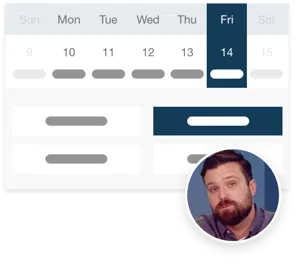Navigating the complexities of real estate investment can be daunting, especially when it comes to tax deferral strategies like the 1031 exchange. This powerful tool allows property managers and investors to defer capital gains taxes by reinvesting the proceeds from the sale of an investment property into a like-kind property. In this blog post, we’ll take you step by step through the 1031 exchange timeline, highlighting the critical dates and actions you need to keep in mind to ensure a successful exchange.
Start your free trial today!
Try Buildium for free for 14 days. No credit card needed.
Start Your TrialWhat is a 1031 Exchange?
A 1031 exchange, named after Section 1031 of the Internal Revenue Code, is a tax deferral strategy that allows real estate investors to defer paying capital gains taxes on the sale of an investment property by reinvesting the proceeds into a like-kind property. This means that instead of paying taxes on the profit from the sale, investors can use the full amount to purchase new properties, thereby maximizing their investment potential.
The primary benefits of a 1031 exchange include:
- Tax Deferral: By deferring capital gains taxes, investors can reinvest the full amount of their proceeds into new properties.
- Increased Buying Power: With more capital to invest, property managers can acquire higher-value properties or multiple properties.
- Portfolio Diversification: Investors can use 1031 exchanges to diversify their real estate holdings, reducing risk and increasing potential returns.
- Estate Planning: Heirs can inherit properties at their stepped-up market value, avoiding capital gains taxes on deferred amounts.
It’s important to note that not all properties qualify for a 1031 exchange. Only real property, such as land and buildings, is eligible. Personal property, like equipment or vehicles, does not qualify.
In this article, we’ll focus on 1031 exchange timelines, when you need to take an action and how long you have to take that action. To learn more about 1031 exchanges in general, check out our blog post, How Does a 1031 Exchange Work, Everything Property Managers Need to Know.
Key Dates and Actions in the 1031 Exchange Timeline
To complete a 1031 exchange successfully you have to stick to very specific timelines and procedures. Missing any of these deadlines can result in losing the tax deferral benefits.
The exchange period lasts 180 days from the sale of the relinquished property. In the first 45 days of selling your original property, you must identify your like-kind property. Then, you must complete the entire exchange within the next 135 days. The whole process can take no longer than 180, total.
The 1031 Exchange Timeline
Here is a breakdown of the dates and actions property managers need to keep in mind:
Day 0: Sale of the Relinquished Property
The timeline begins on the day you close the sale of your investment property, known as the relinquished property. This is Day 0 of the 1031 exchange timeline.
Days 1–45: Identification Period
Within 45 days of the sale, you must identify potential replacement properties. This period is known as the identification period. You can identify up to three properties, regardless of their value, or more than three properties if their combined value does not exceed 200% of the value of the relinquished property.
Action: Prepare a written identification of the replacement properties and submit it to a qualified intermediary or another authorized party. Make sure you’re very specific in identifying the like-kind property, including property addresses or legal descriptions.
Day 46–179: Exchange Period
The exchange period lasts 180 days from the sale of the relinquished property. During this time, you must complete the purchase of one or more of the identified replacement properties.
Once you submit the forms identifying the properties, you have 180 days minus the number of days it took to submit the forms to complete the sale.
Example: If you identified the properties 10 days after you sold the original property, you have 170 days to complete the sale.
Action: Work closely with your qualified intermediary to ensure all necessary paperwork and funds are in place for the purchase of the replacement properties. Conduct thorough due diligence on the identified properties to avoid any last-minute issues.
Day 180: Completion of the Exchange
By the end of the 180-day exchange period, the purchase of the replacement properties must be completed. If the exchange is not completed within this timeframe, the transaction will not qualify for tax deferral under Section 1031.
Action: Finalize the closing of the replacement properties and ensure all funds are properly transferred through the qualified intermediary.
Tips for a Successful 1031 Exchange
To navigate the 1031 exchange process smoothly, consider the following tips:
- Engage a Qualified Intermediary: A qualified intermediary is required for facilitating the exchange and ensuring compliance with IRS regulations. Choose an experienced intermediary who can guide you through the process and handle the necessary paperwork.
- Plan Ahead: Start planning your 1031 exchange well in advance of selling your relinquished property. Identify potential replacement properties early and conduct thorough due diligence to avoid any surprises.
- Consult with Professionals: Work with a team of professionals, including real estate agents, attorneys, and tax advisors, to ensure all aspects of the exchange are handled correctly.
- Stay Organized: Keep detailed records of all transactions, communications, and documents related to the 1031 exchange. This will help you stay on track and provide necessary documentation if needed.
A 1031 exchange is a powerful tool for property managers and real estate investors looking to defer capital gains taxes and maximize their investment potential. By understanding the key dates and actions in the 1031 exchange timeline, you can navigate the process with confidence and ensure a successful exchange. Remember to engage a qualified intermediary, plan ahead, and consult with professionals to make the most of this tax deferral strategy.
Read more on Accounting & Reporting

